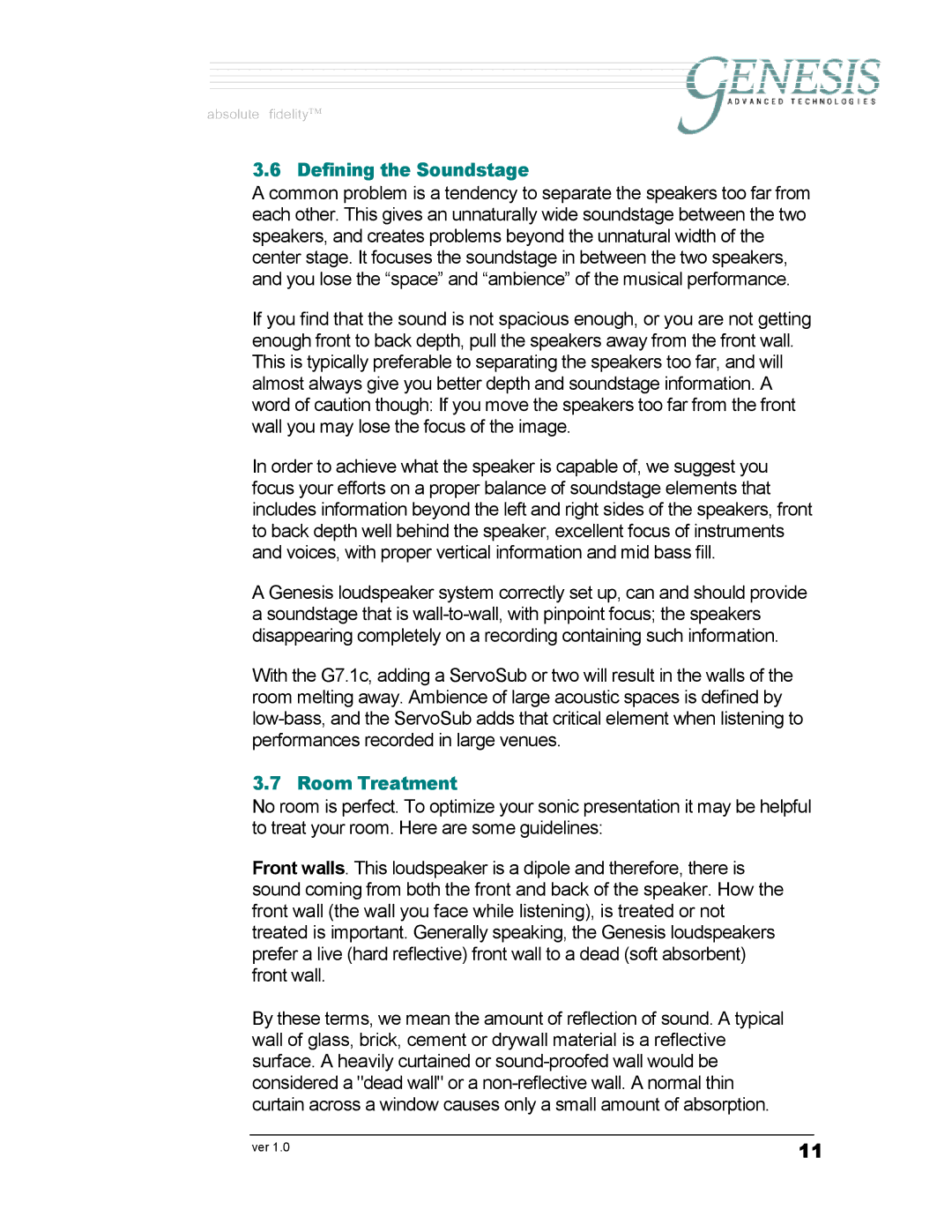
absolute fidelity
3.6 Defining the Soundstage
A common problem is a tendency to separate the speakers too far from each other. This gives an unnaturally wide soundstage between the two speakers, and creates problems beyond the unnatural width of the center stage. It focuses the soundstage in between the two speakers, and you lose the “space” and “ambience” of the musical performance.
If you find that the sound is not spacious enough, or you are not getting enough front to back depth, pull the speakers away from the front wall. This is typically preferable to separating the speakers too far, and will almost always give you better depth and soundstage information. A word of caution though: If you move the speakers too far from the front wall you may lose the focus of the image.
In order to achieve what the speaker is capable of, we suggest you focus your efforts on a proper balance of soundstage elements that includes information beyond the left and right sides of the speakers, front to back depth well behind the speaker, excellent focus of instruments and voices, with proper vertical information and mid bass fill.
A Genesis loudspeaker system correctly set up, can and should provide a soundstage that is
With the G7.1c, adding a ServoSub or two will result in the walls of the room melting away. Ambience of large acoustic spaces is defined by
3.7 Room Treatment
No room is perfect. To optimize your sonic presentation it may be helpful to treat your room. Here are some guidelines:
Front walls. This loudspeaker is a dipole and therefore, there is sound coming from both the front and back of the speaker. How the front wall (the wall you face while listening), is treated or not treated is important. Generally speaking, the Genesis loudspeakers prefer a live (hard reflective) front wall to a dead (soft absorbent) front wall.
By these terms, we mean the amount of reflection of sound. A typical wall of glass, brick, cement or drywall material is a reflective surface. A heavily curtained or
ver 1.0 | 11 |
|
